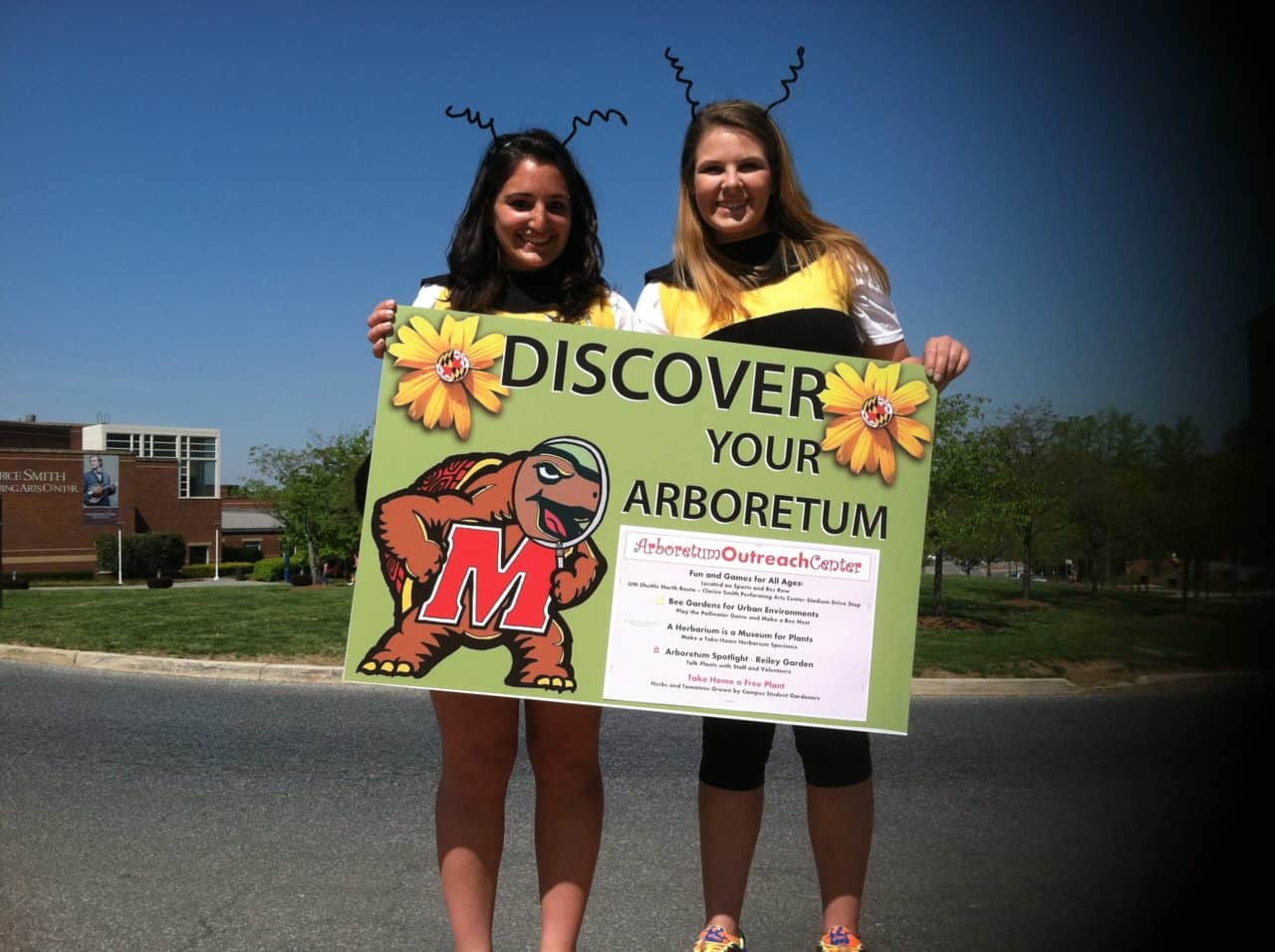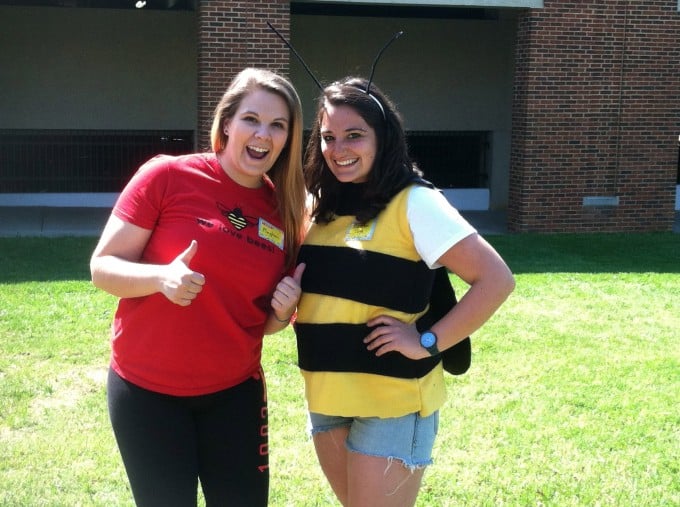
From left: Meghan McConnell and Dana Rushovich
Dana Rushovich is an environmental science & policy major at University of Maryland. Her interest in honey bees led her to our lab this semester. This is her blog.
Stepping on a bees nest and getting stung 8 times would likely turn any 6 year old off of bees. I was no exception. I was always a kid that enjoyed digging in the dirt looking for worms and salamanders and was fascinated when we got to watch slugs make their slime trails for an experiment in science class. But when a bee would fly by I would freeze up waiting for it to leave me alone.
I wasn’t introduced to the wonders of bees until a friend of mine recommended the book Honeybee Democracy and began to tell me about the intricate workings of the honeybee hive. The more I began to learn about these fascinating creatures, the more I became hooked and my childhood fears started to become a distant memory. While studying abroad in New Zealand last year I had the opportunity to spend time with a beekeeper and have my first hands on experience inside of a hive. Then, last fall, I was able to take the beekeeping class offered at Maryland and was probably one of the few students taking the class out of an interest in bees rather than for an easy A.
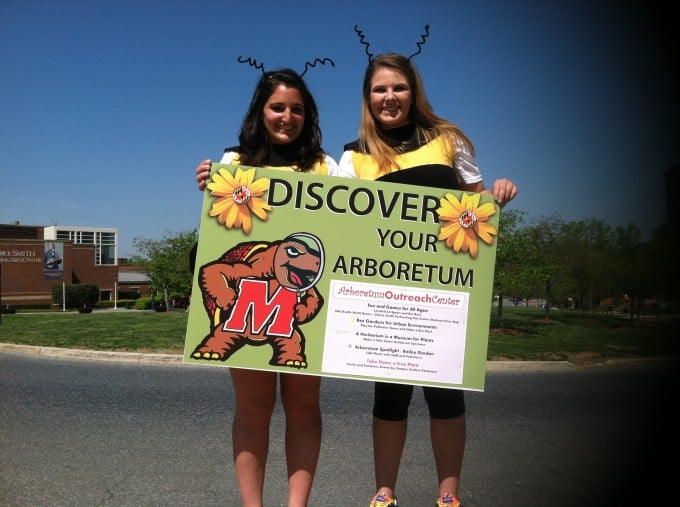
From left: Dana Rushovich and Meghan McConnell.
When I received information about a research position promoting native pollinators I knew I had to apply. It wasn’t until the first meeting of the soon to be Pollinaterps that I fully learned what I would be doing: helping develop a native pollinators booth for Maryland Day.
I have worked at countless booths during my time here at Maryland but this was the first time I would be working behind the scenes throughout the whole planning, design and implementation of the booth. So, with little more guidance than a few brochure topics I set to work, along with fellow student Norris Vassel.
When I sent out the first draft of my brochures I was expecting a few comments, but was instead returned a draft that was majority red. Feeling slightly discouraged that I was in over my head I slowly started to pick through the edits and create an even better second draft. After several back and forths and many hours editing and formatting we eventually created hand out ready brochures to be given out at MD Day.
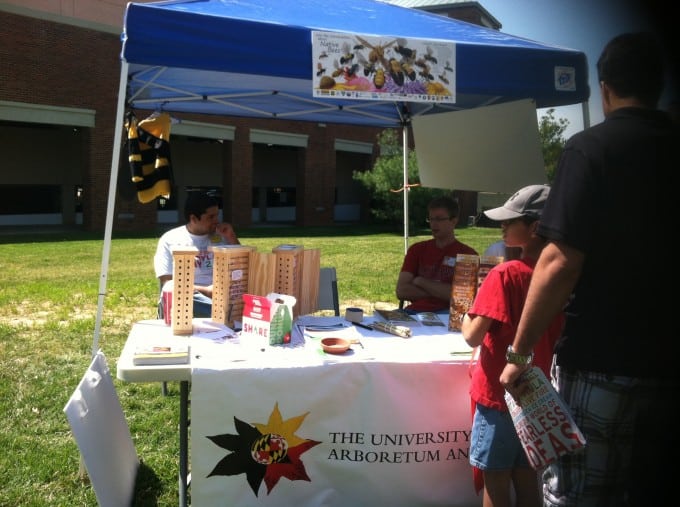
The Pollinaterps booth at Maryland Day.
After the brochures, was the creation of the nesting box activity, invention of a pollinator simulation game, design of a banner, and several small handouts to go along with all of the activities. Before I began this process I never really understood what it took to put together a display. I always took for granted the people behind the scenes who had everything ready when I showed up for my allotted time slot. This process was an invaluable experience, which showed me what it takes to follow a project from start to finish.
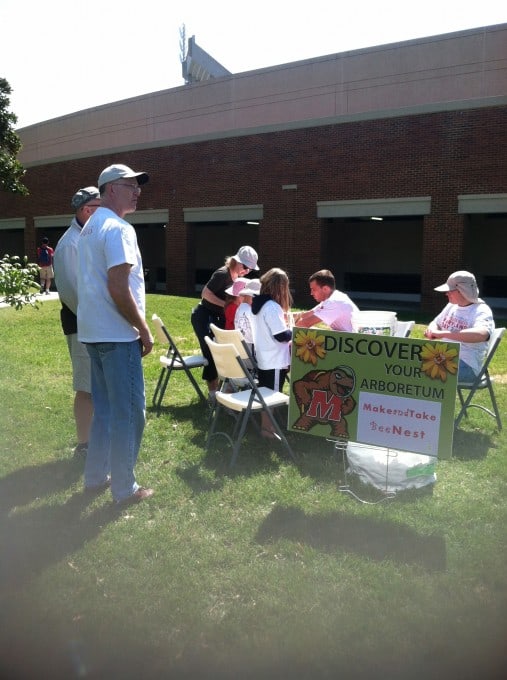
Kids creating native bee nests.
This experience not only taught me about what it takes to put together a project but I also learned a huge amount about native pollinators, including what is causing their decline and how everyone can help. I also really enjoyed getting to work with all the other members of Pollinaterps. Everyone in the group brought different perspectives to the table, which resulted in a much better result than I could have ever hoped for on my own.
The week leading up to Maryland Day was a mad dash to get everything together. But everything was there, albeit a few kinks, and the curious people began to arrive. It took a little coaxing to get kids to play our pollinator game and not everyone was into the idea of learning about bees but in the end I would definitely consider our first ever Pollinaterps booth a great success. I can only hope that it will continue to get bigger and better in years to come.
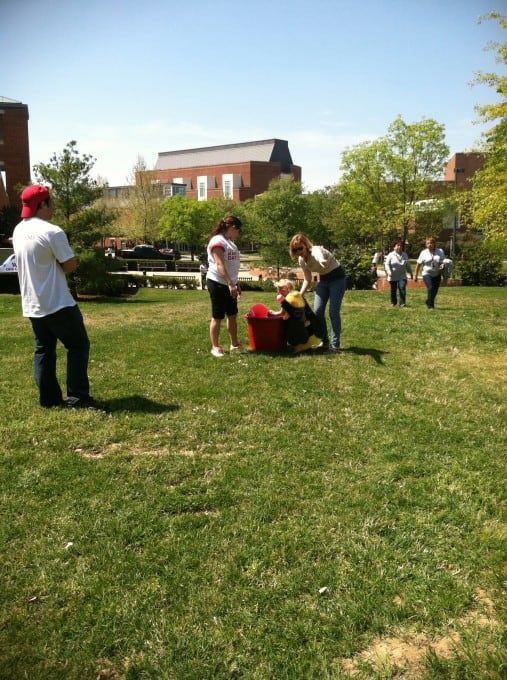
A little girl playing the pollinator game. The kids used static electricity to attract pollen (balloons) to their felt bee costumes.
